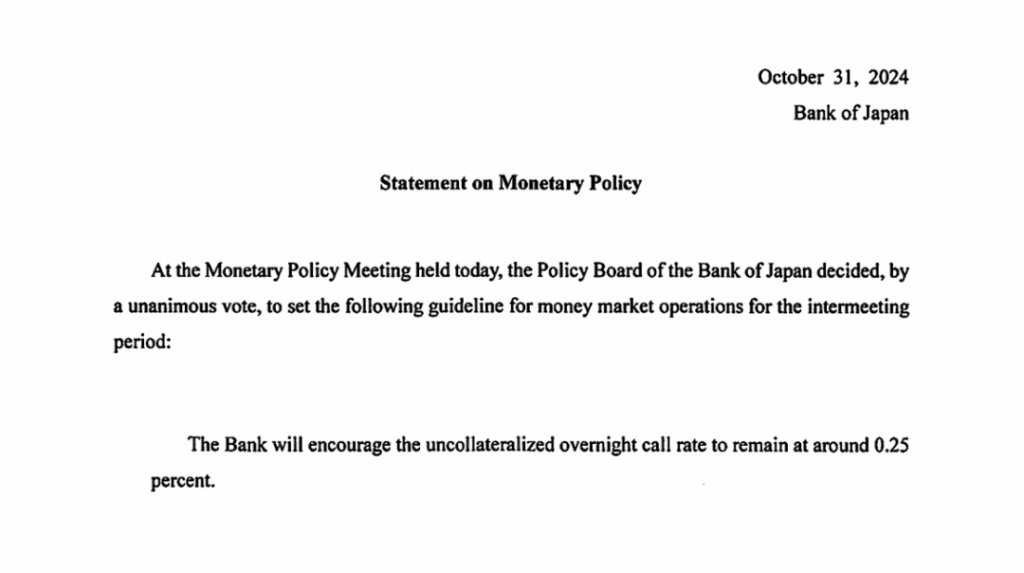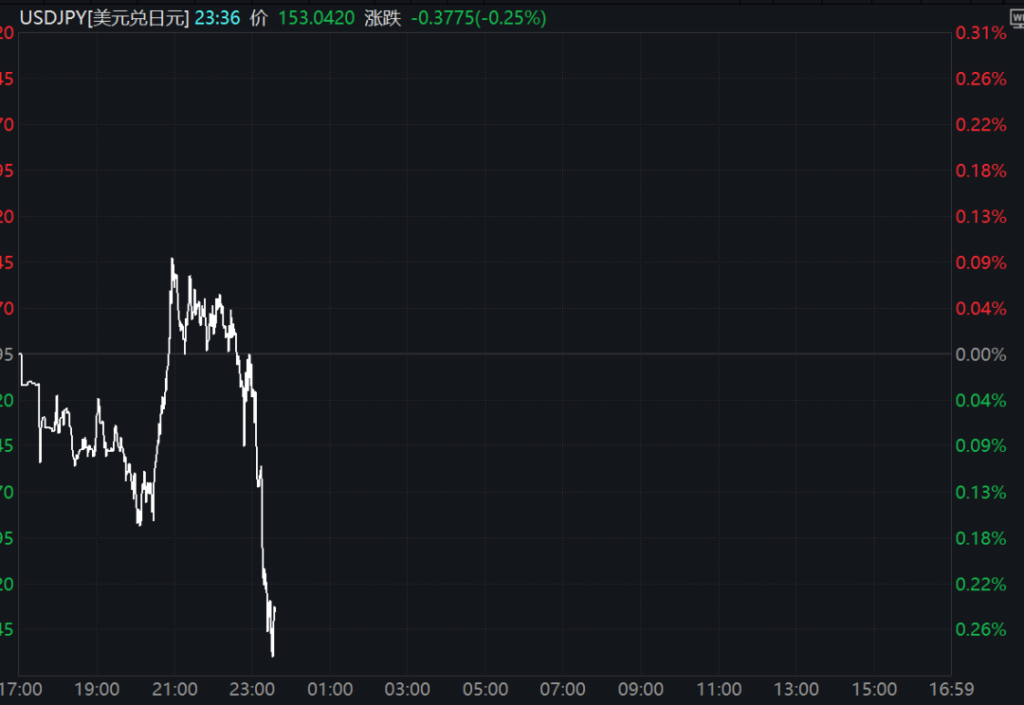On October 31, the Bank of Japan announced its latest monetary policy decision, deciding to maintain the current policy interest rate of 0.25%. The central bank pointed out in its statement that considering that the current real interest rate is still at a relatively low level, if the future economic and price trends are in line with expectations, it will consider further adjusting the policy interest rate.
Inflation expectations remain stable
According to the latest economic assessment report released by the Bank of Japan, the inflation rate is expected to fluctuate around the 2% policy target in the next few years. Based on this judgment, the central bank will continue to promote the normalization of monetary policy. At this policy meeting, the central bank’s decision-making level unanimously voted to maintain the benchmark interest rate at 0.25%. The central bank particularly emphasized the importance of paying close attention to the overseas economic situation, especially the direction of the US economy, and changes in the global financial market.

Regarding price trends, the central bank predicts that the year-on-year increase in the consumer price index will remain at around 2.5% in fiscal year 2024, and will gradually fall back to around 2% in fiscal years 2025 and 2026. Although the cost-push inflation pressure caused by the rise in import prices is expected to gradually ease, the core inflation level is expected to maintain a stable upward trend, benefiting from the improvement in the output gap and the rise in medium- and long-term inflation expectations, as well as the continued deepening of the virtuous cycle of wages and prices.
Looking ahead to fiscal year 2025, on the one hand, the government’s anti-inflation measures will push up the price index, while on the other hand, the recent decline in the prices of bulk commodities such as energy may create some downward pressure. Compared with the previously released “Economic and Price Outlook Report”, the expected real GDP growth rate remains basically stable, but due to the recent decline in the prices of resources such as crude oil, the expected CPI growth rate in fiscal year 2025 has been slightly lowered.
Economic growth forecast slightly adjusted
In terms of economic prospects, the central bank believes that supported by the moderate recovery of the global economy and the loose domestic financial environment, the Japanese economy is expected to continue to maintain a growth trend above its potential growth rate, and the virtuous cycle effect of income and expenditure will become more apparent.

However, the central bank also pointed out that the current economic and financial environment still faces many uncertainties, including risks in the global economic trend, commodity price fluctuations, and corporate pricing behavior. In this context, special attention should be paid to the impact of changes in the financial and exchange rate markets on the economy and prices. It is worth noting that with the increase in corporate wage and price adjustment behavior, the transmission effect of exchange rate changes on prices may be more significant than in the past.
The central bank adjusted its forecasts for real GDP growth in fiscal years 2024-2026 to 0.6%, 1.1% and 1.0%, respectively, with only slight changes compared to the July forecast. The forecasts for core CPI growth in the same period were 2.5%, 1.9% and 1.9%, respectively.
Financial markets remain stable
After the policy decision was announced, the yen exchange rate remained relatively stable, with the USD/JPY exchange rate fluctuating slightly around 153.41. The trend of 10-year Treasury bond futures was stable, and the stock market reaction was also relatively flat.
Ataru Okumura, a strategic analyst at SMBC Nikko Securities, said that central bank governor Kazuo Ueda may adjust his previous cautious stance at the press conference that afternoon, as interest rate hikes may occur at the December policy meeting. He believes that the central bank hopes to gradually raise interest rates to a neutral level through an orderly process, and for this purpose it is necessary to guide market expectations in advance to avoid sharp fluctuations in bonds and stocks when policy adjustments are made.








